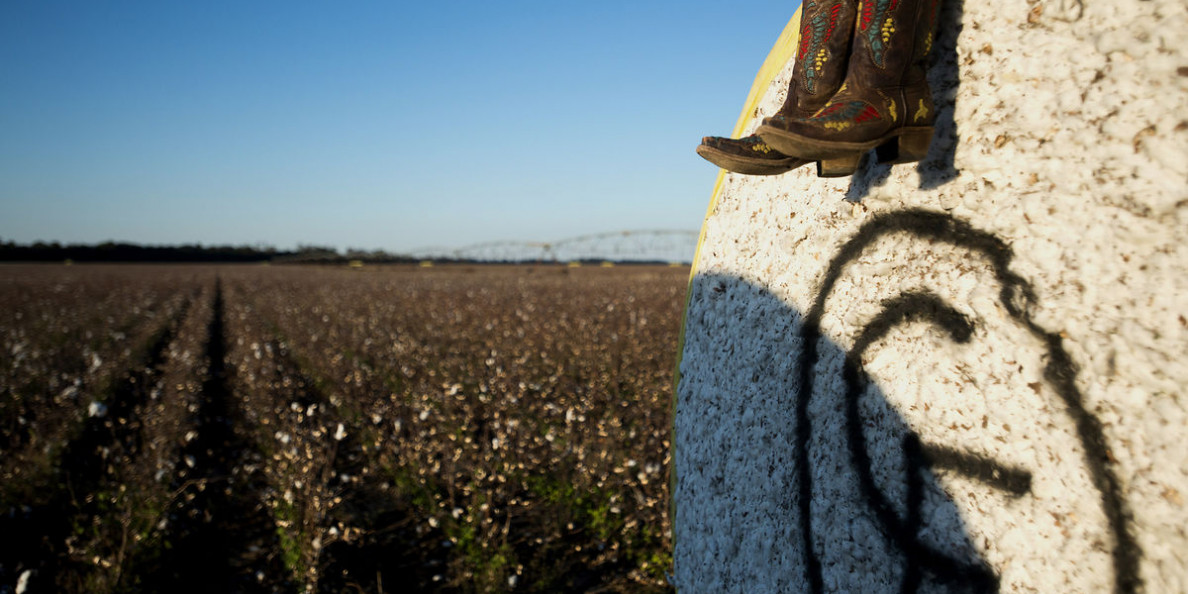September 15, 2023
- Strong Economic Data Has Many Betting Another Pause in Interest Rates Will Occur
- U.S. Production Cut to 13.13 million Bales
- Demand for U.S. Cotton Remains Tepid
- Only 29% of the Cotton Crop in the U.S. is Rated Good to Excellent
December futures traded higher most of the week, getting a boost from outside markets and a supportive WASDE. Despite a delayed Export Sales report that contained poor sales, December futures went into the weekend with moderate gains. The WASDE release on Tuesday kept the market trading higher Monday and Tuesday, but prices turned Wednesday due to a lack of buying, an increase in Reserve sales out of China, and rain received in West Texas. Macroeconomic influences took control to finish the week, and December futures settled at the higher end of the trading range. For the week ending September 14, December futures finished at 87.80 cents per pound, up 242 points from the week prior. Total open interest flattened out this week, losing only 608 contracts to stand at 227,755.
Outside Markets
There was a flurry of activity in both the cotton market and outside markets where important data releases were concerned. Major indexes found support at the end of the week to finish strong. The U.S. Consumer Price Index (CPI) for August reported the biggest gain in 2023, rising 0.6% month-over-month. The Producer Price Index (PPI) also rose more than expected, increasing 0.7% month-over-month, higher than the 0.4% expected by analysts. A higher-than-expected reading for U.S. retail sales helped boost the cotton market on Thursday. August retail sales rose 0.6% month-over-month, more than the expected 0.1%. Clothing sales specifically rose 0.9% in August. The labor market continues to show resilience with a smaller than expected 220,000 claims reported for U.S. initial unemployment this week. The U.S. Dollar reacted positively to the economic data by posting a 6-month high at the end of the week. Crude oil prices continue to march higher and posted a 10-month high from worries of tighter stock and speculation of increased demand in China. The Federal Open Markets Committee (FOMC) meets Tuesday and Wednesday next week. The strong economic data released all but cemented opinions that the Fed will hold interest rates at the upcoming meeting.
WASDE
The World Agricultural Supply and Demand Estimates (WASDE) Report was released on Tuesday, September 12. As expected, USDA cut 2023/24 cotton production 860,000 bales to 13.13 million bales. Exports were also lowered 200,000 bales to 12.3 million bales. Ending stocks decreased 100,000 bales to 3.0 million bales. Domestic consumption stayed the same at 2.15 million bales. One thing to note is that 2022/23 ending stocks were raised 550,000 bales; therefore, increasing 2023/24 beginning stocks 550,000 bales to 4.25 million bales. The overall production decrease was spread throughout many states, but the biggest cuts occurred in the Southeast region. The Southwest region also decreased overall, resulting from decreases in Oklahoma and Kansas. Upland production in Texas stayed the same at 4.2 million bales, but Oklahoma production was cut in half to 260,000 bales and Kansas production was lowered 123,000 bales to 127,000 bales. The total production estimate for Upland cotton in the Southwest is now 4.587 million bales.
The global side of the balance sheet held minor, but notable changes. World production decreased 1.73 million bales to 112.39 million bales. Almost a third of that decrease came from India, where production was decreased 500,000 bales. World consumption decreased by 1.06 million bales to 115.88 million bales. These changes brought world ending stocks to 89.96 million bales, an overall reduction of 1.64 million bales.
Export Sales
The U.S. Export Sales Report for the week ending September 7 showed that demand for U.S. cotton remains tepid. A net total of 67,400 Upland bales were booked for the week, continuing to stay well below what is averaged at this point in the crop year. The biggest buyer of Upland cotton for the week was Vietnam, booking 25,900 bales, followed by Mexico with 25,200 bales, China with 17,500 bales, Bangladesh with 15,200 bales, and Indonesia with 6,100 bales. It should also be noted that a total of 29,800 Upland bales were cancelled on this report. The majority of that reduction came from Turkey, where 25,300 bales were cancelled. A disappointing 118,200 Upland bales were exported for the week, continuing to lag the pace that is typical at this point in the marketing year. A net total of 1,000 Pima bales were sold this week and 7,500 bales were exported.
Weather and Crop Progress
A cool front moved throughout the Southwestern region this week, bringing along below average temperatures and scattered storms. The rain did little to help the dryland crop, but the areas that have irrigated cotton could benefit. Although drought conditions have become prevalent in recent weeks, the rain will help add a little moisture back into the ground. Scattered storms and cooler than average temperatures are expected in the coming week. Overall crop conditions in the U.S. deteriorated for the week ending September 10. Only 29% of the cotton crop in the country is rated good to excellent currently.
The Week Ahead
With a fresh WASDE in hand, traders now have new data to trade on in the coming weeks. Attention will shift back to the usual weekly Crop Progress and Condition report and Export Sales Report. Now that South Texas has wrapped up harvest, focus will shift to ginning and weekly classing reports. All eyes will be on whether the Fed will pause interest rates at the FOMC meeting next week.
- Friday at 2:30 p.m. Central – Commitments of Traders
- Monday at 3:00 p.m. Central – Crop Progress and Condition Report
- Thursday at 7:30 a.m. Central – Export Sales Report
- Thursday at 2:30 p.m. Central – Cotton On-Call


